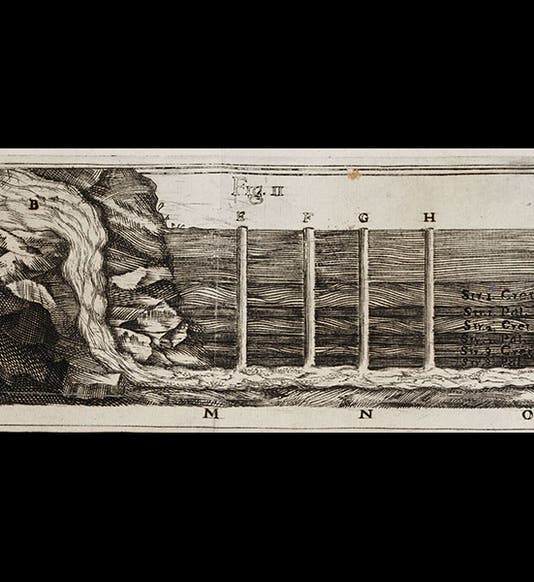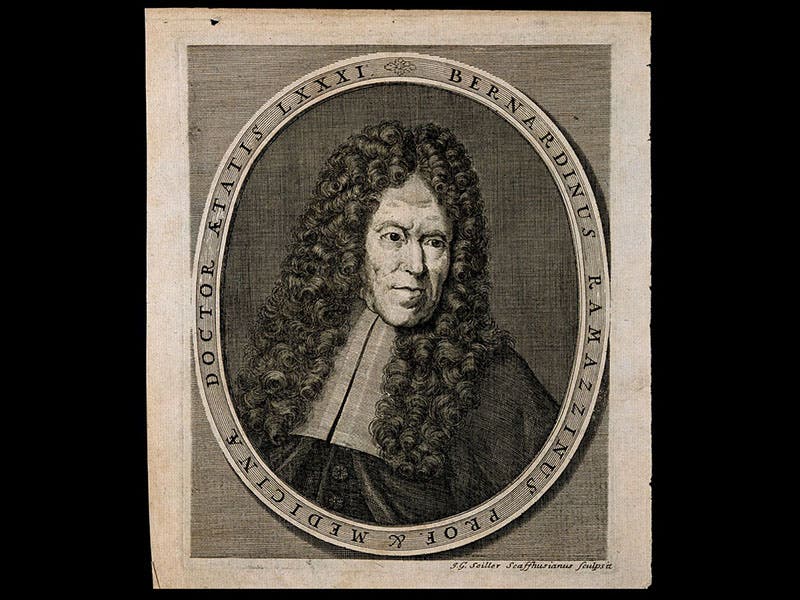Scientist of the Day - Bernardino Ramazzini
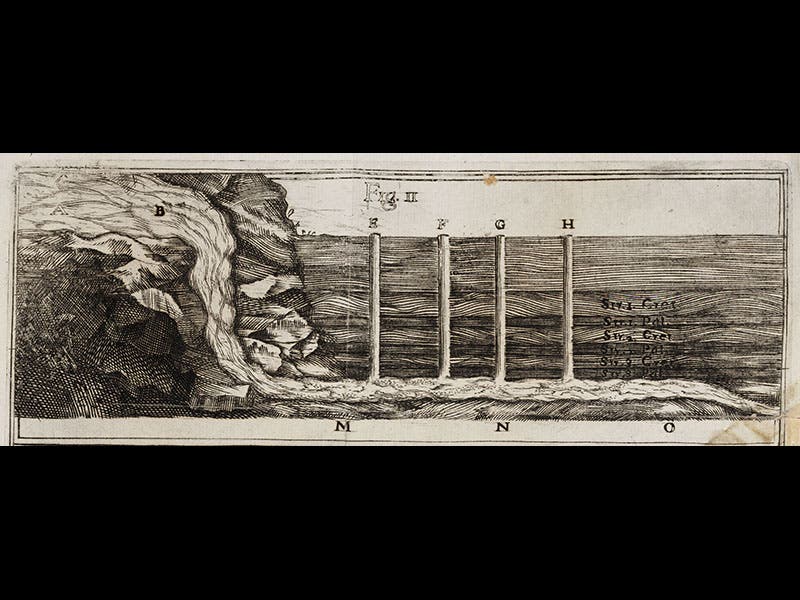
Linda Hall Library
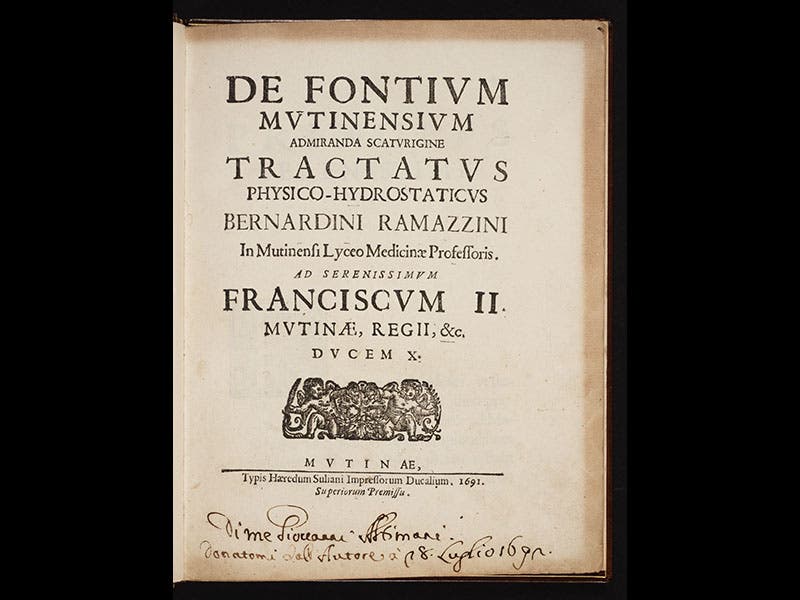
Linda Hall Library
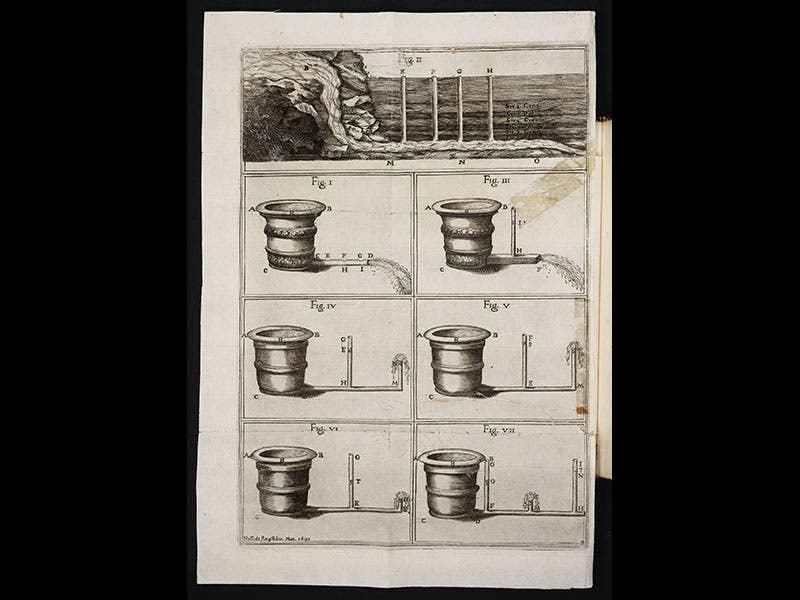
Linda Hall Library
Bernardino Ramazzini, an Italian physician, was born Nov. 3, 1633. Look up Ramazzini in any online biography and you will learn that he was a pioneer in occupational medicine, being one of the first to recognize that different professions bring with them their own risks and illnesses (as any hatter would agree if he weren’t mad). This would seem to be a significant achievement and worthy of notice. But we feel that Ramazzini made a much more thoughtful contribution to science when he was among the first to realize, as a result of personal observation, that the past history of the earth can be read from the geological record, an understanding shared with few other people in the 17th century. In 1691, Ramazzini published a book, De Fontium Mutinensium (The Fountains of Modena), and no, it is not about the making of balsamic vinegar, Modena's most significant contribution to world cuisine. Instead, it addresses an odd fact, that if you dig a well anywhere in Modena that is at least 50 feet deep, a fountain will spring up. Ramazzini wondered why. He never did figure that part out, although he guessed that some sort of underground river was responsible (first image). But as he observed the digging of wells, he noted that some of the layers of soil far below the surface had seashells in them. He concluded that this could only have happened if Modena, at some time in the distant past, had been covered by the sea. There are only four early modern natural philosophers who realized that land and sea have maintained a shifty alliance and have, on occasion, changed places. Three of them--Robert Hooke, Nicolas Steno, and Gottfried Leibniz--are acclaimed for their insight. Ramazzini came to the same conclusion and deserves to be just as well known. We did our part in 1984, when we featured Ramazzini's contribution to historical geology in our exhibition, Theories of the Earth. Apparently our catalog escaped the notice of the author of the Wikipedia article on Ramazzini and most other biographers.
The portrait of Ramazzini, an engraving, is in the collection of the Wellcome Library in London (fourth image). The other images come from our Library's copy of De Fontium Mutinensium.
Dr. William B. Ashworth, Jr., Consultant for the History of Science, Linda Hall Library and Associate Professor, Department of History, University of Missouri-Kansas City. Comments or corrections are welcome; please direct to ashworthw@umkc.edu.

